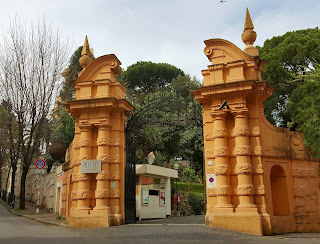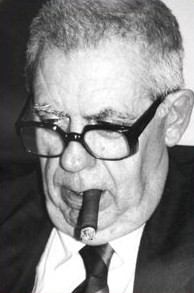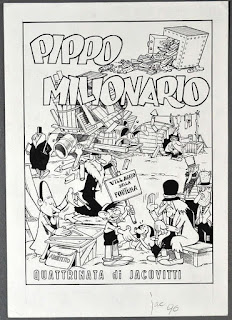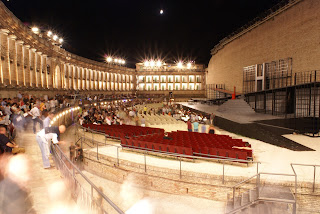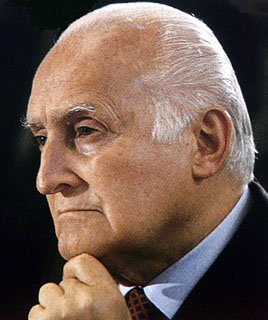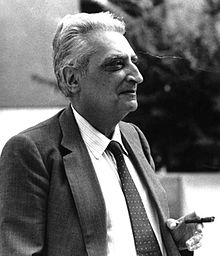 |
| Renzo De Felice was accused of trying to generate sympathy for Fascism |
Mussolini biographer whose views on fascism aroused anger
The controversial historian Renzo De Felice, best known for his 6,000-word four-volume biography of Benito Mussolini, was born on this day in 1929 in Rieti, the northernmost city in Lazio.
Although De Felice was Jewish and his other major work described in detail the persecution of Jews in Italy under Mussolini’s rule, he sparked considerable anger by arguing that the postwar world view of Fascism should be revised to recognise that the ideology in itself was not inherently evil.
De Felice contended that fascism as a political movement in Italy was not the same as Fascism as a regime, arguing that the former was a revolutionary middle-class ideology that had its roots in the progressive thinking of the Age of Enlightenment.
He argued that the ideology was effectively hijacked by Mussolini to provide the superstructure for his dictatorship and personal ambition and that fascism itself, as distinct from Mussolini’s interpretation, was a valid political concept, not just something to be demonized and dismissed in simplistic terms.
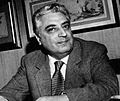 |
| Renzo De Felice spent more than 30 years writing a 6,000-page biography of Mussolini |
Critics of De Felice, a professor at the Sapienza University of Rome, interpreted his favourable assessment of some of social and economic reforms introduced by Mussolini, and his argument that he was largely a popular leader until the outbreak of the Second World War, as an attempt to rehabilitate fascism. Some accused him of being an apologist for the self-styled Duce.
Denis Mack Smith, an Oxford historian and the author of several histories of Italy, denounced De Felice for minimizing the uglier side of Fascism, such as Mussolini's personal responsibility for killing political opponents and leading Italy to ruin in his unwavering support for Hitler, while Nicola Tranfaglia, a professor of history at the University of Turin, argued that De Felice overstated Il Duce's popular support, pointing out that while Mussolini enjoyed a measure of popularity with ordinary Italians, he would not risk free elections.
From Italy’s political Left came complaints that De Felice was too sympathetic to Italian Fascism, even that he supported it. A few months before he died, two incendiary devices were thrown at his house in Rome, although no one claimed responsibility for the attack.
 |
| De Felice (right) with his publisher, Vito Laterza |
De Felice himself was a former member of the Italian Communist Party, which he had joined as a student. He left after the party declared its support for the Soviet repression of the Hungarian Revolution in 1956 and joined the Italian Socialist Party.
He died in Rome in 1996 at the age of 67, having been ill for several years. In accordance with his wishes, he was given a small, private funeral, devoid of ceremony.
When news of his death emerged, there were tributes from many political figures, including the President of the Republic, Oscar Luigi Scalfaro, while many newspapers described him as one of the greatest Italian historians of the 20th century.
Beyond Italy, his death brought praise for De Felice for his independent spirit, his intellectual courage and the thoroughness of his research.
 |
| The Piazza Vittorio Emanuele, with the Fontana dei Delfini, is the central square of Rieti |
Situated about 80km (50 miles) northeast of Rome, the city of Rieti sits in the far northeastern corner of the Lazio region, near the borders with Abruzzo, Le Marche and Umbria. The ancient capital of the area once known as Sabina, Rieti has a population of around 47,000 people and is a popular destination for visitors from Rome, who enjoy the peaceful nature of the city and the surrounding area. Although it was once the site of a Roman city on the Via Salaria - the “salt road” linking Rome with the Adriatic coast - only a few remains are visible, although the remnants of a third-century bridge are a point of interest. At the heart of the present city is Piazza Vittorio Emanuele, with the Fontana dei Delfini at the centre. The nearby 13th century Palazzo Comunale houses the Civic Museum, which houses artifacts from the 9th BC through to the Roman era, along with paintings from the 14th century onwards. Some famous architects worked in the city, including Carlo Maderno, who designed the Renaissance-style Palazzo Vecchiarelli in the late 16th century.
 |
| Bucatini all'Amatriciana originates from Amatrice, a town not from from Rieti famed for its food |
Rieti is known for its hill cuisine, with hearty stews and meat dishes and handmade pasta dishes. Potatoes, mushrooms, truffles, and wild berries grow in the area and figure into the regional cuisine, as does homemade Pecorino cheese and sausages. The nearby town of Amatrice, which suffered considerable damage in an earthquake in 2016, is home to the famed pasta dish Spaghetti all'Amatriciana. The Rieti area has its own DOC wines, too - Colli della Sabina, in white and red varieties.
Also on this day:
1492: The death of Renaissance ruler Lorenzo the Magnificent
1848: The death of composer Gaetano Donizetti
1868: The birth of equestrian pioneer Federico Caprilli
Home


